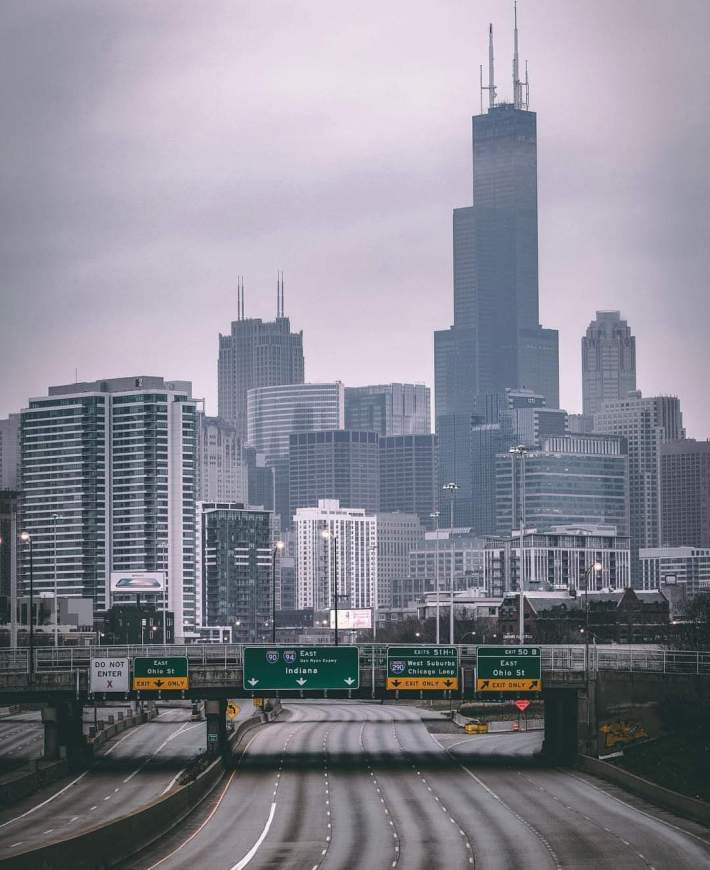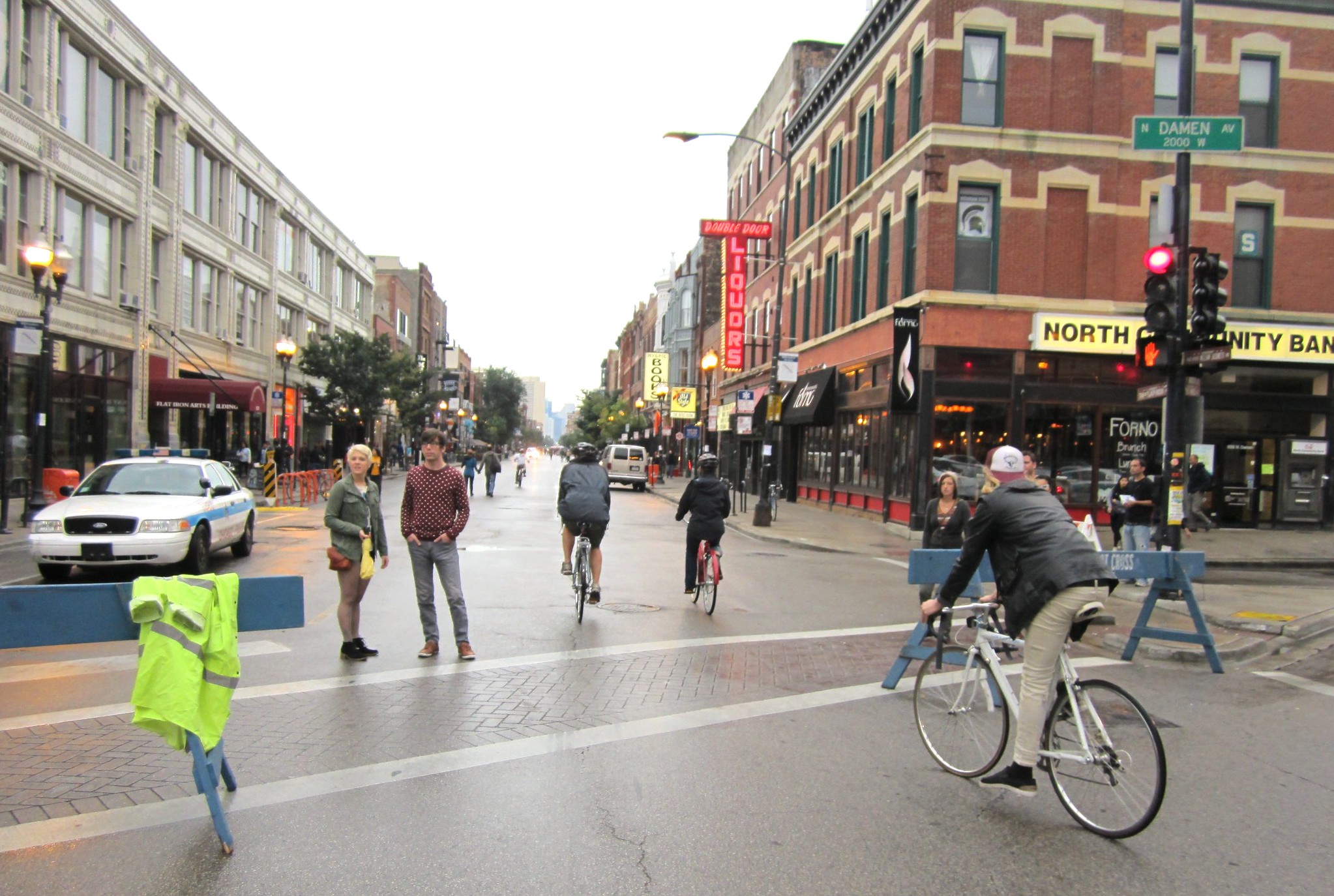I'm sure by now you have seen pictures of Chicago streets and expressways virtually devoid of cars. Looking at the streets without automobiles occupying them reveals just how much space we've given over this space- and energy-inefficient mode, which normally makes our city more dangerous, polluted, and congested. Some of us can hear the difference in traffic volume; we no longer hear a constant din of cars and their horns at various hours of the day.
I'm afraid some people will be unaware of this new quiet due to being preoccupied with the coronavirus. I'm afraid the ones who do notice the quiet will fail to realize we can experience quieter, safer, more efficient streets all the time. I'm more afraid our streets will go back to normal once it's okay to return to everyday activities. The economic fallout of the Coronavirus is once again exposing the warts of late-stage capitalism. The mass panic-buying of food and household items that has left store shelves empty has shown us that selfishly looking out for one’s own interests is harmful. Similar parallels can be made with our transportation system. Why are we stalling on creating a transportation system that can work for us all and help us achieve our traffic safety and climate goals due to the complaints of those who are resistant to progressive change?

Bogotá, the capital of Colombia, and Mexico City have temporarily expanded their bike lane network in an effort to reduce crowding on transit and provide safe routes for biking. Closer to home, Philadelphia and New York are opening streets for car-free transportation and recreation during the outbreak. The city of Chicago has an opportunity to follow suit by rethinking the layout of our streets and acting more boldly to decrease traffic casualties and emissions.
Just as the city of Chicago and state of Illinois are listening to scientists when it comes to COVID-19, we must do the same when it comes to experts who specialize in climate change. Currently our City Council is more apt to listen to drivers’ complaints when it comes to repurposing travel lanes to create more people-friendly streets, bus lanes, and physically protected bike lanes. I find this interesting given that a study found that most motorists would prefer not to drive and would like to take transit. Perhaps some of the complaints we hear from drivers opposed to bus and bike lanes stem from a fear of the unknown, or the belief that sustainable transportation can't compete with driving. Either way, bringing down crashes and emissions is not complicated. We just have to make it easier, safer, and more attractive to use active transportation, make drivers pay for the true cost of driving, and use land efficiently.
Here are a few ways the city of Chicago can take massive action on reducing transportation emissions:
- Roll out at least 25 miles of bus lanes in 2020. Michigan Avenue from Roosevelt to Oak St. is an excellent candidate for bus lanes given the high number of bus routes it serves, the large numbers of pedestrians, and its many travel lanes. It makes zero sense to force so many buses to compete for road space with single-occupancy vehicles.
- Replace free on-street parking on with bus and/or protected bike lanes. For example, the Damen bus connects riders with two Brown Line stops, two Blue Line stops, the Pink Line, and the Orange Line. This route would be well served by having its own lane and transit-friendly stoplights at key intersections. Damen also sees a healthy amount of people on bike despite having no protected lanes. We can improve bus service for current and potential passengers, and increase safety for people on bikes. Granted, Chicago's awful parking meter contract, which requires the city to compensate the concessionaire whenever metered spots are removed, makes this more complicated, but we should prioritize finding a way out of the contract.
- The city should convert more existing non-protected bike lanes to parking-protected bike lanes by relocating the bike lane to the curb and moving the parking lane to the left of the bikeway. I'm thinking of the bike lanes on Winthrop and Kenmore avenues and many like them. Parking-protected lanes require striping a few feet of "dead space" between the parked cars and the bikeway to prevent doorings. But the narrowed travel lanes will help help discourage speeding and make the streets safer for everyone.
- Close off side streets to through traffic to create more space for folks to walk and bike while practicing "social distancing," staying at least 6' away from others to prevent viral transmission.. Starting Thursday New York City is opening up two streets in every borough to people. While this isn't a lot of space considering the size and density in New York City, it's more than what Chicago is currently doing.
If you know of a street within your ward that could easily be turned into a car-free street for people during the pandemic and possibly beyond, write your alderman and let him or her know our current sidewalk widths make practicing social distancing difficult.
What are some other ways Chicago can create safer walking and biking conditions during this time?
Here are some tips on preventing the spread of coronavirus, and advice for Chicagoans on what to do if you think you may have been exposed to the virus.





